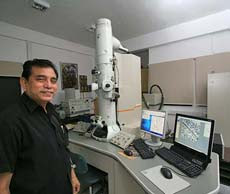
Lalji Singh former Director CCMB
GENETIC MIX - All Indians have some north, south in them
I t n one of the boldest atempts to reconstruct the population history of the country, which has so far held that north Indians descended from the Aryans and south Indians from Dravidian speakers, researchers now say nearly all Indians are a mixture of two ancestral groups which predate the arrival of Indo-European and Dravidian speakers in the country.
In Thursday's issue of Nature, scientists from the Centre for Cellular and Molecular Biology (CCMB) in Hyderabad, Harvard Medical School and Broad Institute at Massachusetts Institute of Technology (MIT) in Cambridge, Massachusetts, report that different Indian groups have inherited 40-80% of their ancestry from a population which they call Ancestral North Indians (ANI) and the rest from a population called Ancestral South Indians (ASI).
Genetically, ANIs are closest to present-day Europeans, and ASIs to the disappearing Andamanese tribe of Onge, which CCMB scientists, in another study, have shown to be similar to the first humans that migrated out of Africa some 65,000 years ago.
The present research's claim is indeed grandiose, but the scientific evidence is compelling and it's a "bold idea", says Aravinda Chakravarti, a professor at the McKusick-Nathans Institute of Genetic Medicine, Johns Hopkins University School of Medicine in Baltimore. "At least other samples will allow acceptance or rejection of this hypothesis."
source: livemint
From Nature.com
India has been underrepresented in genome-wide surveys of human variation. We analyse 25 diverse groups in India to provide strong evidence for two ancient populations, genetically divergent, that are ancestral to most Indians today. One, the 'Ancestral North Indians' (ANI), is genetically close to Middle Easterners, Central Asians, and Europeans, whereas the other, the 'Ancestral South Indians' (ASI), is as distinct from ANI and East Asians as they are from each other. By introducing methods that can estimate ancestry without accurate ancestral populations, we show that ANI ancestry ranges from 39–71% in most Indian groups, and is higher in traditionally upper caste and Indo-European speakers. Groups with only ASI ancestry may no longer exist in mainland India. However, the indigenous Andaman Islanders are unique in being ASI-related groups without ANI ancestry. Allele frequency differences between groups in India are larger than in Europe, reflecting strong founder effects whose signatures have been maintained for thousands of years owing to endogamy. We therefore predict that there will be an excess of recessive diseases in India, which should be possible to screen and map genetically.

No comments:
Post a Comment